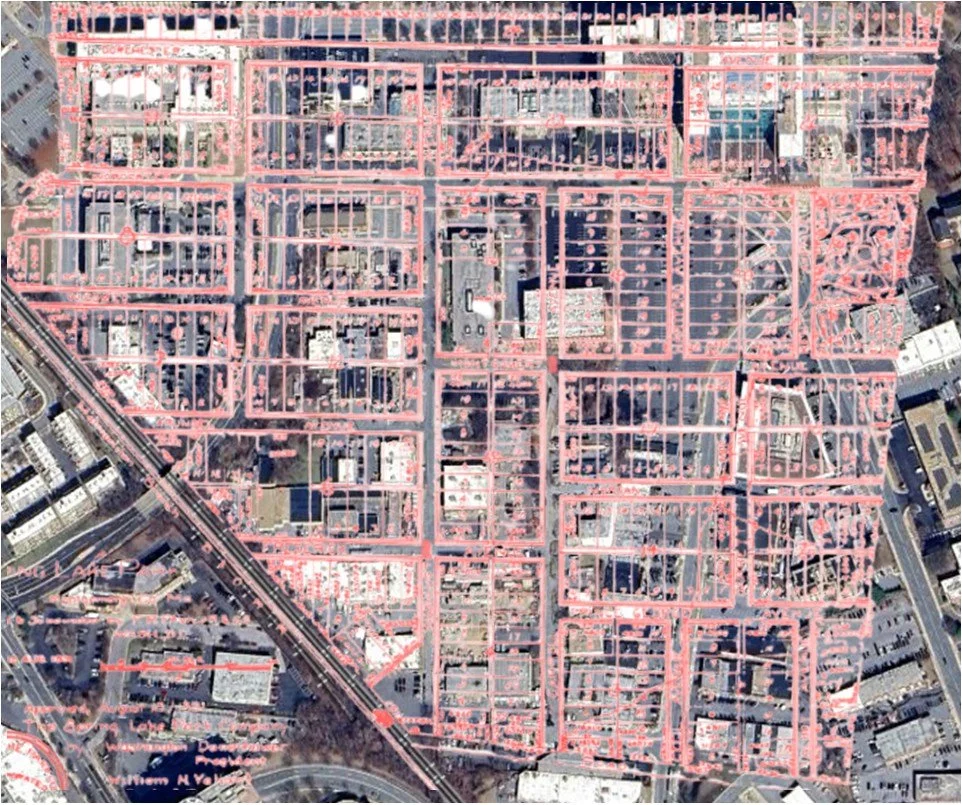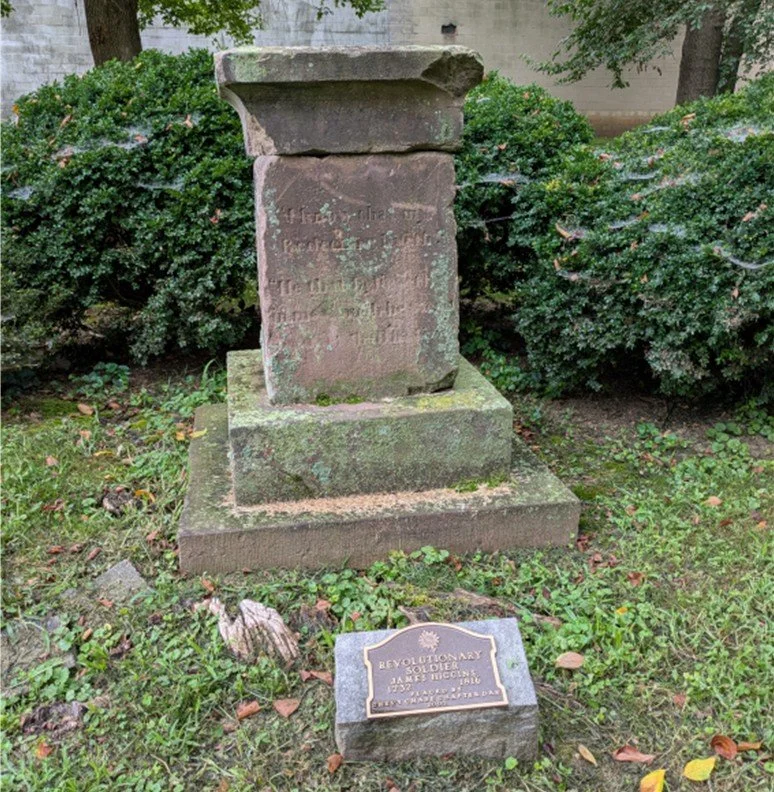The Ghosts of Rockville's Spring Lake Park
Publisher’s Note: In addition to satire and humor, The Montgonion publishes news, commentary and other non-satirical content like this article. Enjoy.
In the suburbs of Montgomery County, Maryland, near Rockville Pike and Twinbrook Metro, faint traces remain of Spring Lake Park—a mostly working-class neighborhood erased by urban growth. Established in the late 19th century, it leaves behind five or six surviving houses and a cemetery as ghosts of its past. This article recaps its history and highlights these remnants through recent fieldwork.
Historical Origins and Community Life
Spring Lake Park's roots trace to the 18th century, when Revolutionary War veteran James Higgins and his wife farmed the land with enslaved labor, establishing a homestead with springs, fields, and a family cemetery. By 1891, the Spring Lake Park Company had purchased much of the land and subdivided seventy-six acres into small lots near the Baltimore & Ohio Railroad's Halpine Station, naming streets after Maryland counties and attracting working-class commuters.
In the early to mid-20th century, the enclave grew to about 59 modest homes. Residents managed rural challenges like unpaved roads and shared wells, enduring the Great Depression through resourcefulness—selling dairy or pooling resources. Families formed tight bonds, with children playing in springs and attending nearby schools. Post-World War II improvements included paved streets and sewers. With construction supported by the GI bill, Spring Lake Park included 300 homes by 1952.
Decline and Disappearance
By the 1960s, urbanization accelerated Spring Lake Park's fade. New suburbs with modern infrastructure like Twinbrook coupled with booming commercial construction shifted focus, while highways such as the Capital Beltway and I-270 demolished homes and altered access throughout the county.
In the mid-1960s, Twinbrook Parkway cut through the heart of Spring Lake Park, dividing the neighborhood and obliterating several houses on either side. Calvert Avenue, the main street, disappeared. The enormous “E” shaped U.S. Department of Health, Education and Welfare building opened on Parklawn Drive in 1970. Commercial and light industrial uses took over Spring Lake Park and residents were encouraged to sell. Most structures were razed. Streets were renamed or erased. Today only the faintest whispers and fragments of Spring Lake Park endure.
Rediscovering the Remnants Today
In a November 2005 article about Spring Lake Park published by the Montgomery County Historical Society, Eleanor Cunningham, a retired MCPS secretary and the author of Montrose School, The First Ninety Years, wrote, “Today, only six houses remain standing in the old subdivision, and development of the entire north side of Twinbrook Parkway for multiple usage is being planned.” Twenty years later, development is in full swing. Old buildings along Parklawn Drive have been replaced with modern, LEED-certified buildings like McClean Bible Church’s Montgomery County campus and Element 12420. We wondered—are any of the remaining houses still standing?
Remarkably, we found five of the remaining Spring Lake Park homes, and a sixth structure from the period. The sixth structure appears with its own house number in some land records and may in fact be included in the six Cunningham said existed.
The remaining Spring Lake Park houses are located in a rezoned, light industrial area tucked behind the intersection of Twinbrook Parkway and Parklawn Drive. The homes, some just shy of 100 years old, are occupied by contractors, supply houses, and a club for recovering addicts. To track them down, we accessed land records and historical documents, consulted Google Earth, and drove the streets and back alleys of the former community in search of traces of the past.
To help us understand what we were seeing, we consulted with Molly Carter, a Rockville resident and 20-year veteran in the Montgomery County real estate industry. Carter has visited thousands of area homes constructed in the early and middle 20th century. “So often when I go into much older homes, I find they are built remarkably solid. That is partly why some of these have survived and moved on to other purposes,” Carter shared.
5701 Wicomico Avenue, Built 1931, 1600 SF
This 1931 rambler, the oldest of the remaining homes, was likely two bedrooms and one bath. “Built just two years after the Great Depression, homes were built conservatively,” Carter said. From the home’s 192 SF front patio at the corner of Wicomico Avenue and Washington Avenue, residents had a lively view of neighbors going about their daily business. This residence shows evidence of having a basement privy off the waste line. Today most of the area underneath the building is garage space accessed via a ramp from ground level at the rear of the house. The property is owned by a developer with a larger parcel adjoining it off Parklawn Lane, leaving one to wonder if this ghost house will disappear soon too.
12411 Washington Avenue, Built 1939, 972 SF
The home appears to be a raised rambler, with porches added later. “Ten years after the depression and not yet involved in WWII, they were still building small even with larger families. Homes like this would house families with half a dozen to a dozen children sometimes. This may have had an open porch constructed at the time it was originally built and enclosed later. These were often sleeping porches for comfort in the summer months without modern air conditioning,” Carter observed. The home has a basement or cellar accessible by walkdown stairs on the side. Today the home serves as an office for a fencing contractor who also occupies an adjacent lot.
12319 Washington Avenue, Built 1939, 3,346 SF
This little cape cod with later additions would have originally had one or two bedrooms on the first level, and one big or two small bedrooms on the second, depending on how they placed the stairs. “Most cape cods this age had one big bedroom upstairs if they plastered it and finished it for airflow, a major design consideration back when homes didn’t have air conditioning,” Carter said. “Usually, these models had one bathroom on the main level and maybe a privy down in the basement.”
The basement is accessible via a stairwell on the right side of the home. Additions to the left and in the back provide a great deal more space, which is important to the home’s current tenant: The Rockville Metro Club, a meeting facility for individuals recovering from addiction. A year ago, the property changed hands and according to the club’s website they are looking for a new venue. This will mean another turning point, perhaps the final one, for a ghost house in Spring Lake Park—the last pretty, well-manicured one from the forgotten neighborhood.
5705 Arundel Avenue, Built 1947, 4,156 SF
Built just two years after the end of World War II, this home on Arundel Avenue is the largest by far of the Spring Lake Park ghost houses. Now completely encased in vinyl siding, it is hard to be sure what is going on underneath. “This one may be a saltbox style if it has a lower one level at the back. Otherwise, I would call it a colonial, but I wonder if this was more a boarding house style with multi-family units or rooms,” Carter speculated. According to historical records, larger homes in the community were used as boarding houses for workers and travelers at nearby Congressional Airport in the years just after the war.
5705 Wicomico Avenue, Built 1938, 1740 SF
One of the most intriguing Spring Lake Park ghost homes is located on Wicomico Avenue and is either a rambler or one level bungalow. The property is now occupied by a company that sells marble and granite, and the home’s front wall boasts a marvelously out of place marble facade. The lot is packed with stone, making it difficult to photograph the home completely. An outbuilding at the rear of the home is listed as “Warehouse / Distribution” in the Bright Multiple Listing Service, but it actually another Spring Lake Park remnant.
5707 Wicomico Avenue, circa 1938-1950, approx 1500-2000 SF
Although the address does not appear in Maryland SDAT Real Property Search, the structure behind 5705 Wicomico Avenue appears with its own house number, 5707, in the Bright MLS maps. Based on the 1891 plat map, it appears both structures are within the same parcel. 5707’s architecture and building materials are early- to mid- 20th century. It is possible the second house was for extended family and later converted to commercial use. But it appears more likely to have been built for the latter. Today it has huge, mirrored windows on one side and the front is open to load marble and masonry supplies.
Higgins Cemetery
The Higgins Cemetery, on a half-acre plot on Arundel Avenue, is a preserved landmark with graves of James, his wife Luraner, and twelve kin, as well as other unmarked graves. Once overgrown and overflowing with decades of dumped trash, it was reclaimed in the late 1990s by a group including members of the Higgins family, chapters of the Daughters of the American Revolution (DAR), Peerless Rockville, the Kensington Historical Society, and former residents. “Today Higgins Cemetery survives as an oasis in a century-old subdivision that was carved out of colonial farmland,” Cunningham wrote in 2005. On our visit we found the cemetery still had its charm, a true hidden gem in the middle of a forgotten neighborhood, destined to be the last place to find ghosts of Spring Lake Park.
Preserving the Past
Spring Lake Park's story is not unique in Montgomery County. Emory Grove in Gaithersburg was severely impacted by urban renewal programs in the 1970s and the physical neighborhood as it once existed has largely disappeared. Lincoln Park in Rockville was similarly impacted, and the neighborhood's original fabric was forever altered. The Lyttonsville neighborhood in Silver Spring, one of the county's oldest historically Black neighborhoods, was targeted for urban renewal in the 1960s. The county seized much of the residential area, replacing it with an industrial park, a bus depot, and a service center for the Washington Suburban Sanitary Commission.
Working-class neighborhoods like Spring Lake Park, with their modest homes and personal histories, are often swept away by the tide of progress, replaced by infrastructure that prioritizes efficiency over memory. The remaining houses and Higgins Cemetery stand as fragile anchors to a past that risks being forgotten amid new construction and shifting demographics. Documenting these remnants is vital not only to preserve the narrative of Spring Lake Park but also to honor the broader human experience of Montgomery County's evolution. Each surviving structure and gravestone carry stories of resilience, community, and adaptation—lives that shaped the region before it became a modern metropolis. As redevelopment accelerates, capturing these vestiges through photography, oral histories, and archival research ensures that future generations can connect with their heritage.
Reference
This article draws heavily on historical details from "Spring Lake Park: A Forgotten Neighborhood" by Eleanor M.V. Cook, published in *The Montgomery County Story*, Vol. 48, No. 4 (November 2005), Montgomery History. Available here.


















